Navigating the world of special education can feel overwhelming, but you're not alone in this journey. Whether you're seeking support for your child or exploring resources, understanding your options is key. In this article, we'll break down the essential steps to crafting an effective special education request letter. Join us as we delve into helpful tips and insights to ensure your voice is heard and your child gets the support they need!
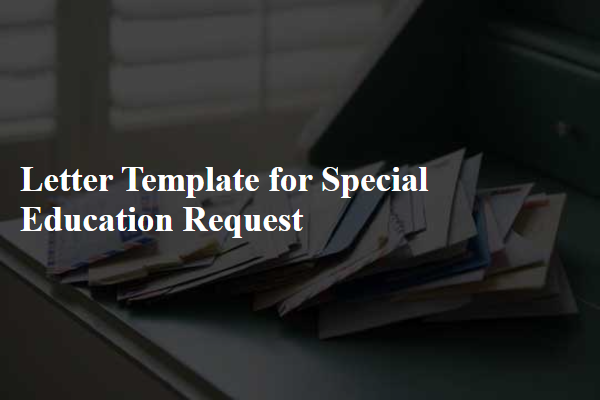
Personal Information
Special education requests often involve a detailed presentation of personal information to ensure that the needs of students with disabilities are adequately addressed. This personal information typically includes the full name of the student, date of birth for age verification, and current educational institution, which should be clearly identified (e.g., Maplewood High School). Additionally, parent or guardian names, contact details such as phone numbers and email addresses, and the student's unique identification number (if applicable) form a crucial part of the request. Supplementary information may encompass the specific disability or condition diagnosed, relevant medical documentation, and any previous assessments that underscore the necessity for special educational services, aligning with the guidelines of the Individuals with Disabilities Education Act (IDEA).
Student's Educational Needs
Special education requests focus on addressing the unique educational needs of students with disabilities or learning challenges. Individualized Education Programs (IEPs) serve as tailored educational plans developed by a team of educators, specialists, and parents, based on assessments and evaluations. For example, students with autism spectrum disorder (ASD) may require specific accommodations, such as communication support or sensory breaks, to thrive in classroom settings. Additionally, assistive technologies, like speech-to-text software or specialized reading tools, can enhance learning experiences for students with dyslexia or visual impairments. Schools must adhere to regulations outlined in the Individuals with Disabilities Education Act (IDEA), ensuring that all students receive appropriate resources and support to achieve their educational goals. Timely assessments and ongoing progress monitoring are essential for adjusting strategies and interventions to meet evolving needs.
Specific Services Requested
The specific services requested for special education include individualized educational plans (IEPs) tailored to meet unique learning needs. Strategies include specialized instruction in areas like reading comprehension and math skills, focusing on multisensory techniques to enhance understanding. Support services such as speech-language therapy for communication improvements and occupational therapy for fine motor skills are also essential. Additionally, access to assistive technology devices, including text-to-speech software and tailored learning apps, will facilitate individualized learning experiences. Regular assessments and progress monitoring are crucial to adjust services based on ongoing development, ensuring that each student achieves their academic potential.
Supporting Documentation
In order to facilitate a formal request for special education services, comprehensive supporting documentation plays a crucial role. This includes evaluations (such as psychological assessments or educational testing) that detail specific learning disabilities (like dyslexia or ADHD), medical diagnoses (for instance, autism spectrum disorder), and educational history (records from previous schools or Individualized Education Plans, IEPs). Additional information may be beneficial, including observations from teachers and parents highlighting behavioral patterns or learning challenges in various classroom settings. Furthermore, reports from specialists such as speech-language pathologists or occupational therapists can provide valuable insights into the student's needs, ensuring a well-rounded understanding of their capabilities and requirements for tailored educational support. Collectively, this documentation will substantiate the request for a more inclusive and adaptive educational environment.
Contact Details
A special education request must include crucial contact details for effective communication. Parents or guardians should provide their full names (e.g., Jane Doe), addresses (including street names and zip codes, such as 123 Maple Street, Anytown, NY 12345), phone numbers (landline or mobile), and email addresses (e.g., janedoe@email.com) to ensure the school and education professionals can reach them effortlessly. Including the student's full name (e.g., John Doe), date of birth (e.g., January 15, 2015), and grade level (e.g., third grade) adds context for the request, allowing for better understanding and tailored responses from the special education team. Additionally, specifying the preferred method of communication can enhance clarity in future interactions.
Letter Template For Special Education Request Samples
Letter template of school support services for special education request
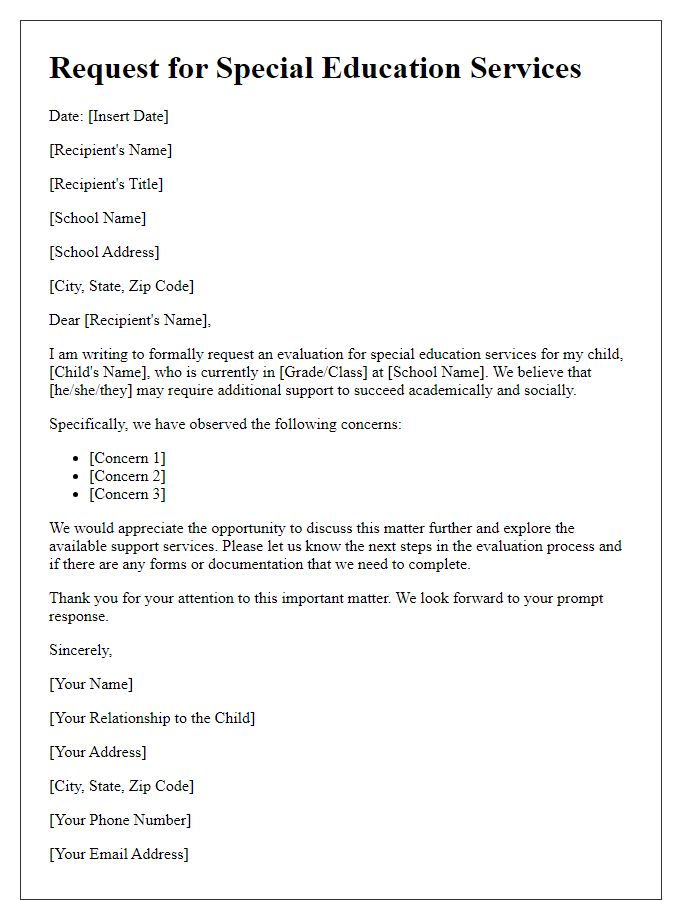

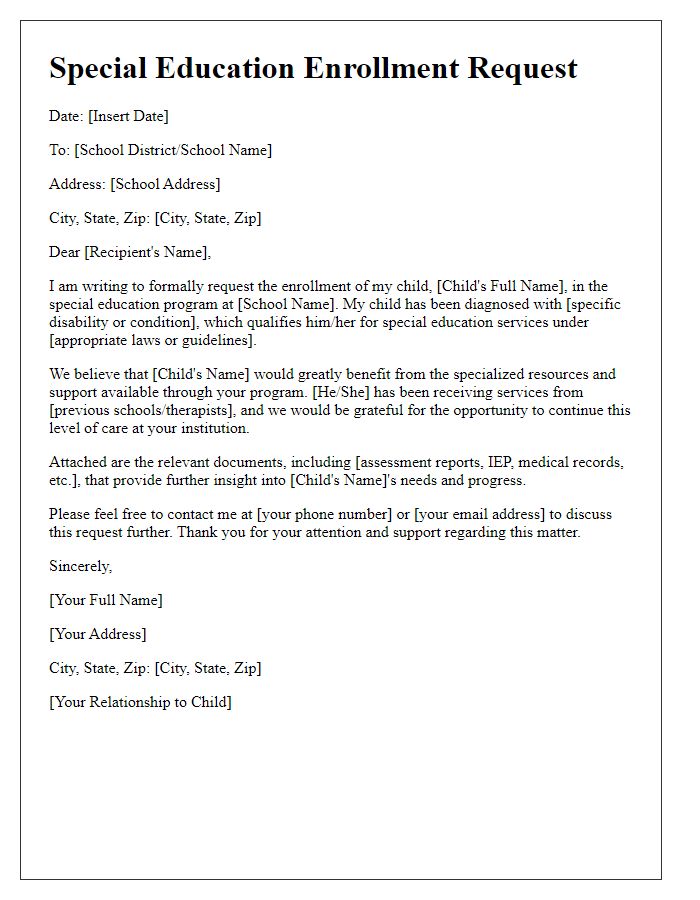
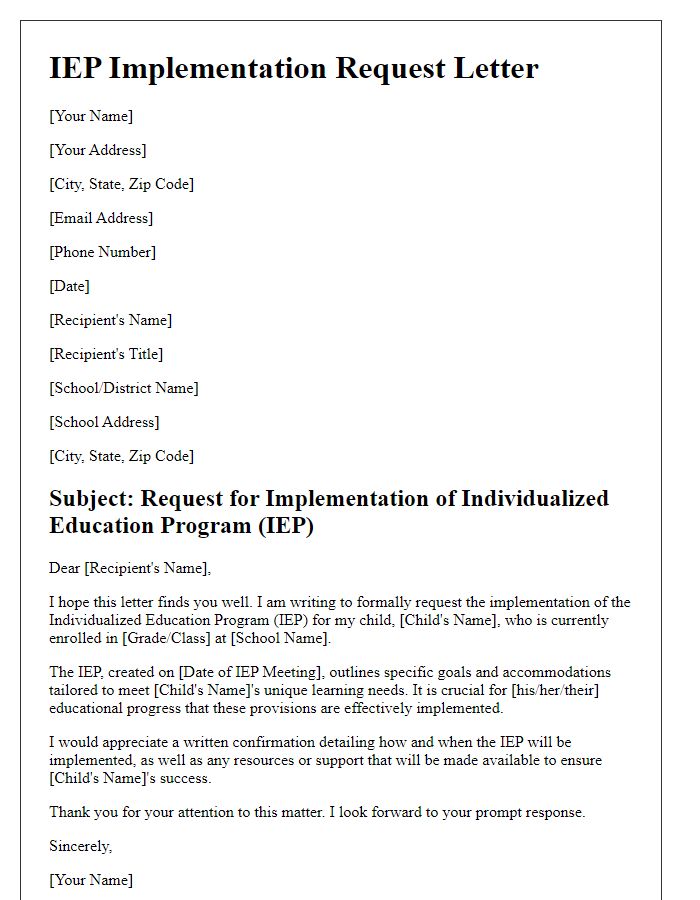
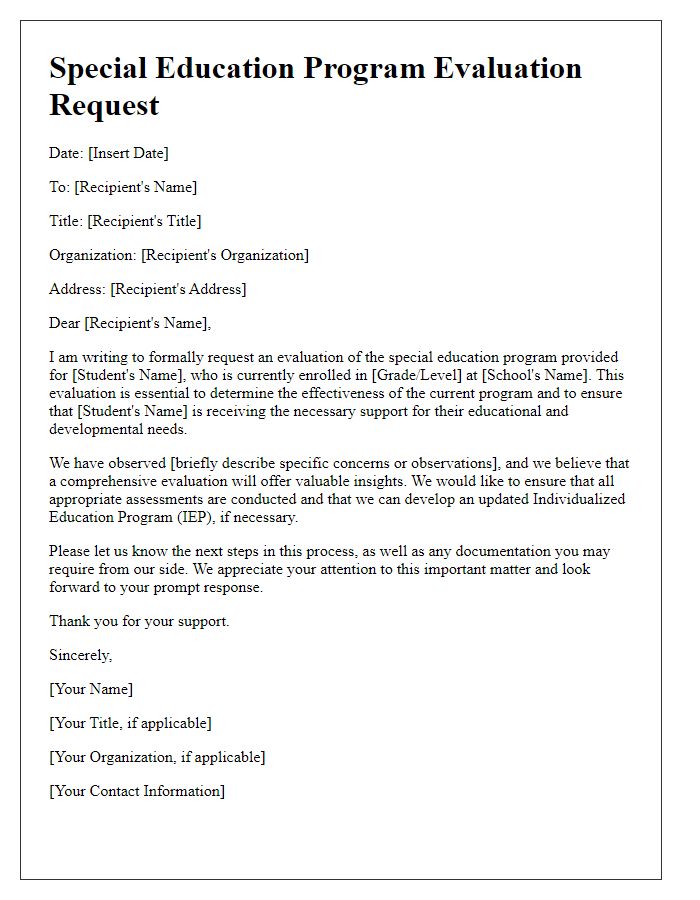
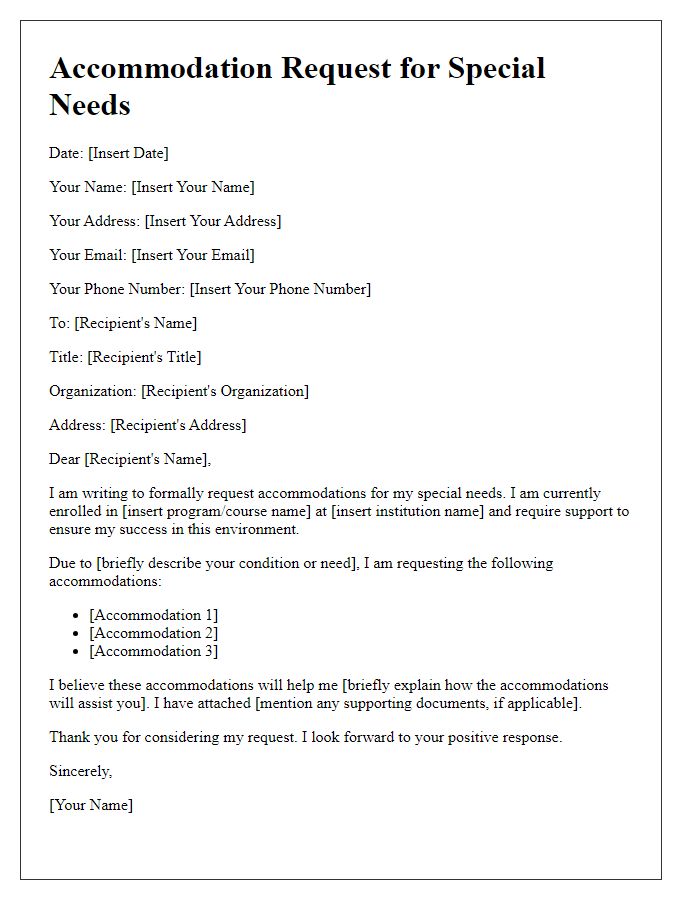
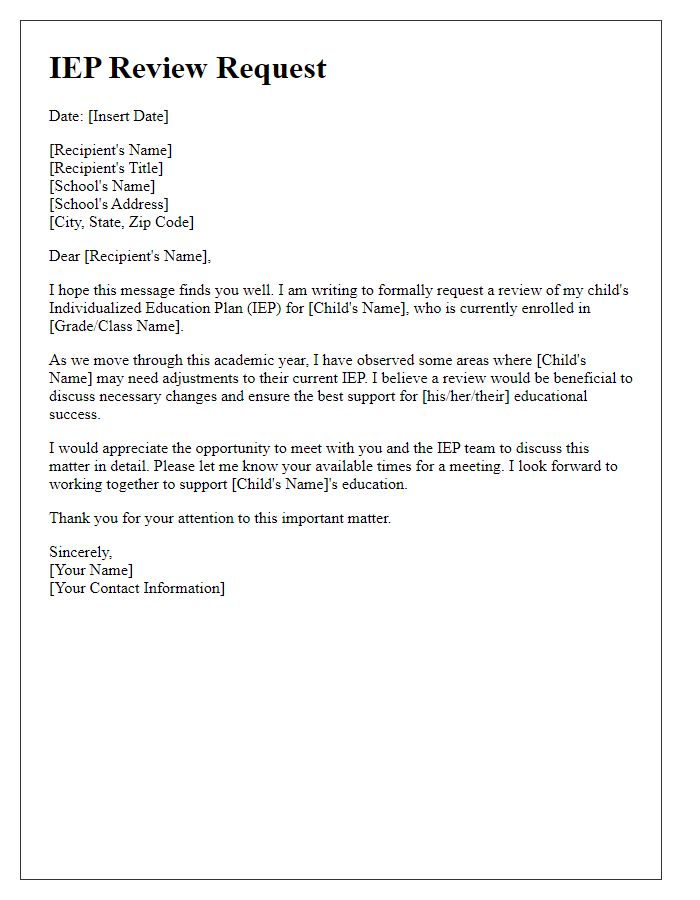
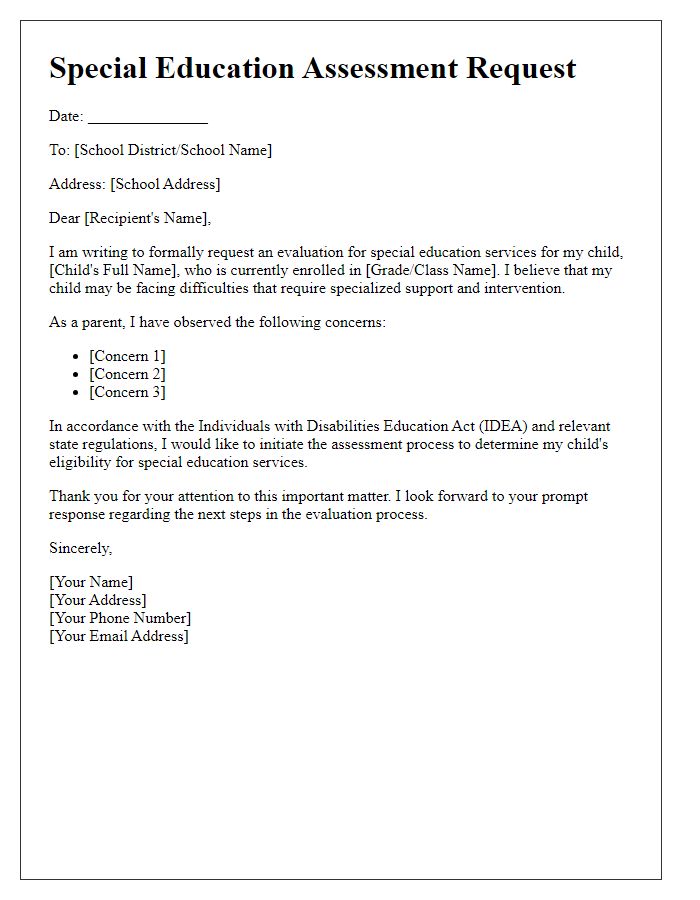
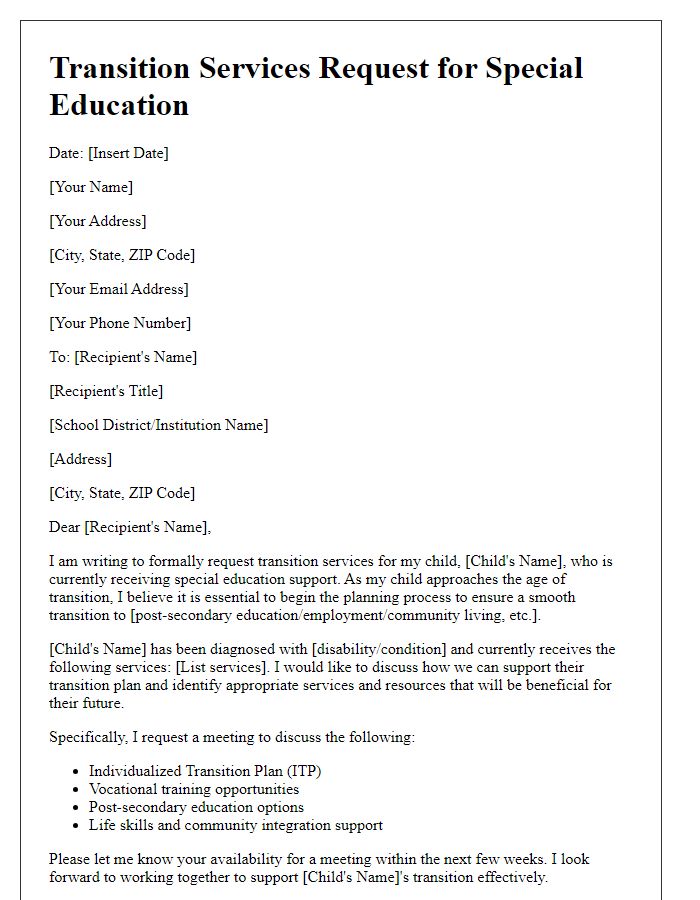
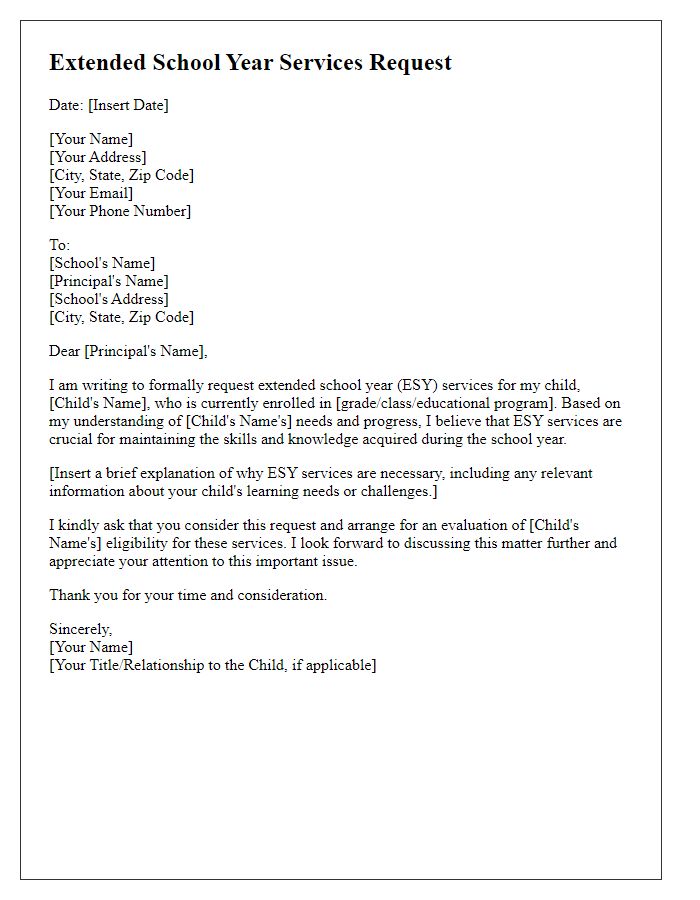
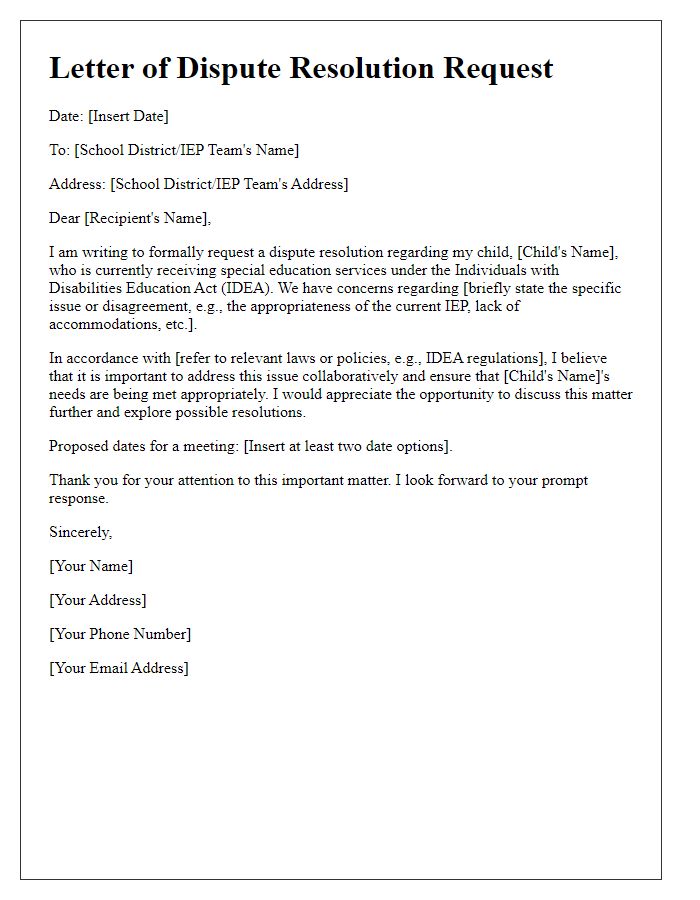

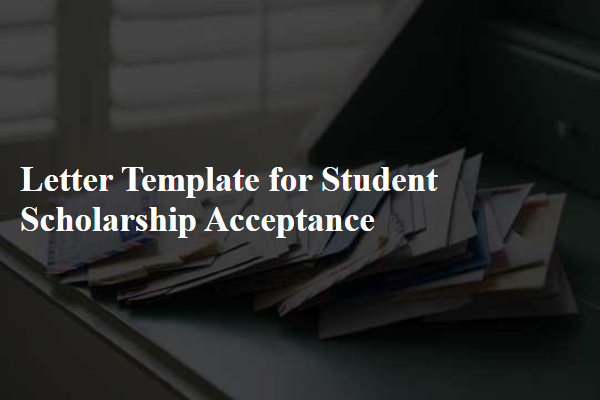
Comments